LoRaWAN® is the communication protocol that uses the LoRa modulation at the physical level. With the LoRaWAN®, one of the goals is to transmit data wirelessly using as little power as possible. LoRaWAN® sensors are typically powered by a battery source that has a finite lifetime. Milesight, as a professional designer of battery-powered LoRaWAN® wireless sensors applications, has been especially concerned with wireless sending low rate sensor data over many kilometers while minimizing battery power use.
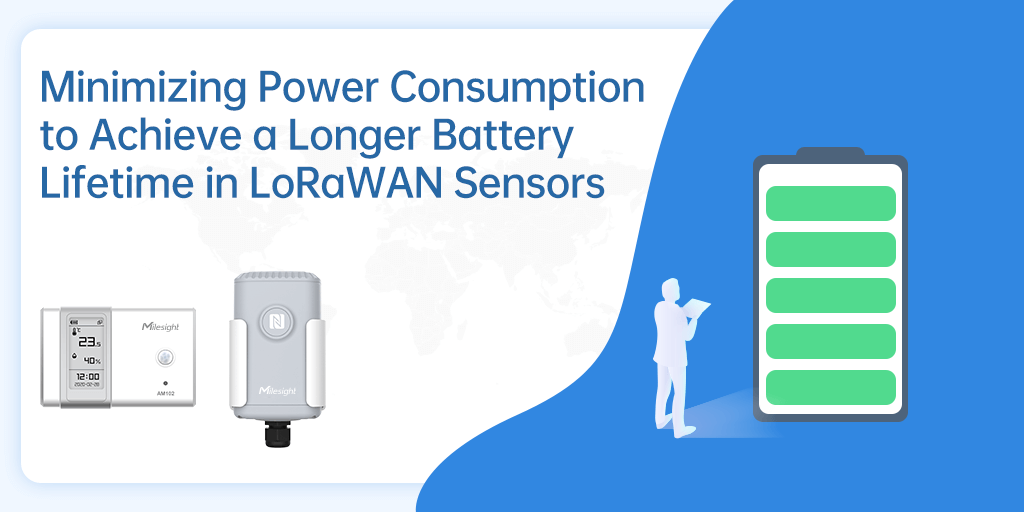
To design an autonomous LoRaWAN® sensor, it is important to minimize its power consumption from the first beginning of hardware design to the final testing phase. This blog post covers several key technical factors that how Milesight team help to improve LoRa battery life.
1. Support Class A the most energy-efficient class
Taking into consideration the application needs, the LoRaWAN® Alliance defines three classes available for different power usage strategies, which are Class A, Class B, and Class C.
Figure 1 summarizes the LoRaWAN® class characteristics. Supporting Class A, sensors can initiate an uplink transmission based on their own needs. This class allows bi-directional communication, each uplink transmission is followed by two short downlink messages. Class A has the lowest power consumption. And Milesight EM300-TH temperature sensor, Milesight EM500 environmental sensors and AM104 series ambient monitoring sensors can support this most energy-efficient Class A by running off a small battery usage.
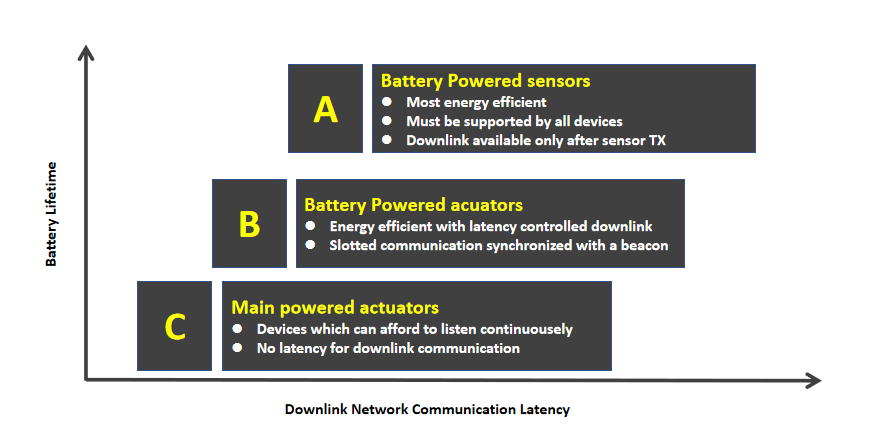
<LoRaWAN® Classes Strategy>
2. Select qualified hardware components
In LoRa network, most LoRa sensor and sensor node devices should have a LoRa radio chip and a separate micro-controller unit (MCU) that both use power. When designing the hardware, Milesight selects the most qualified components from the MCU supplier like STMicroelectronics and embedded sensor from MeterGroup, which minimize the power consumption.
3. Achieve harmonious coordination between hardware and software
To save power, the communication module and the micro-controller unit in a sensor device must be in sleep state as long as possible when they are not active to collect data. With the help of professional equipment, we can easily optimize the efficiency of each component and interfaces to use the minimum power to achieve their duty on sleep mode and active mode.
For example, in sleep mode, the standby current of the AM104 sensor is at least 15% lower than the similar products according to our testing in the same environment.
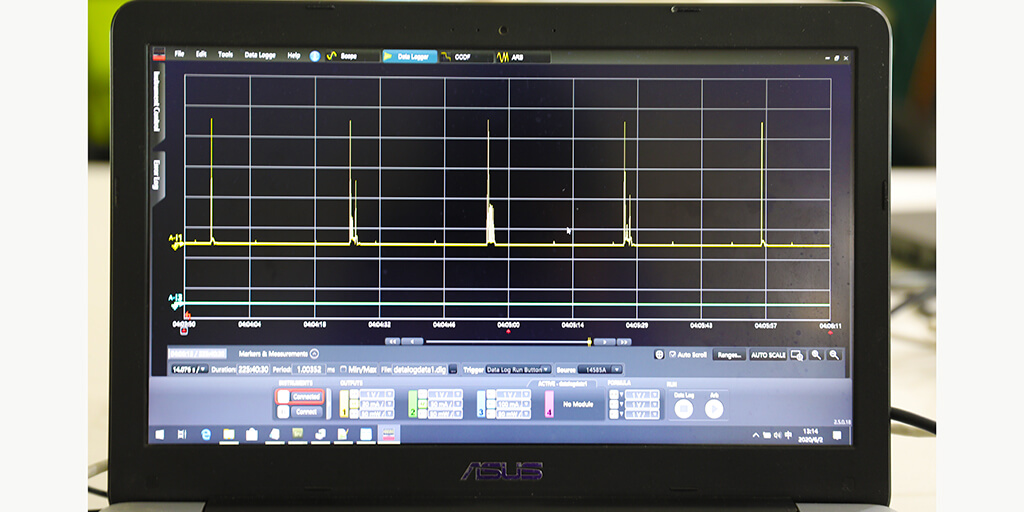 <power consumption in active mode & sleep mode>
<power consumption in active mode & sleep mode>
4. Keep LoRa Spreading Factor as low as possible
In LoRa terms, the amount of spreading code applied to the original data signal is called the spreading factor (SF), which impacts the communication performance of LoRa that uses an SF between 7 and 12. A higher SF increases the time on-air, which increases energy consumption, reduces the data rate, and improves communication range.
From the below-testing result of Milesight EM500 series environmental monitoring sensors, you can clearly find that with the same data report interval at every 10 minutes, the smaller spreading factors used (SF7), the longer battery life ( more than 10 years) in sensors.
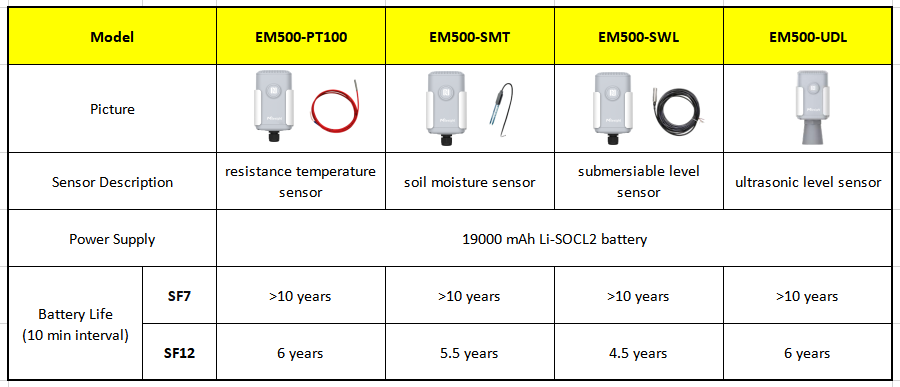
<Spreading Factors impact on battery consumption>
5. Stop updating data on screen
Milesight has done a good job of designing the sensors and writing the software for them so that they go into as a low power state as possible when the sensor is not doing anything.
Milesight AM104 series sensors, in which there is a feature named Smart Screen Mode. It is clear that smart screen mode will have an evident effect on battery life, potentially 15% less if data stops updating on screen in comparison to the smart mode enabled in this example.
 <Smart Mode Enabled & Disabled Comparison>
<Smart Mode Enabled & Disabled Comparison>
6. Match an antenna impedance
Antenna makes sensor wireless. It is the most critical component that launches the signal into space. The antenna impedance acts as a load impedance for the transmission line that carries the signal to the antenna.
Milesight LoRaWAN® sensors are coming with the active antenna impedance matching function, which reduces the power consumption to a minimum. For example, when the transmit power reaches 20 DBi, the energy consumption of Milesight LoRaWAN® sensors can be reduced up to 30% through the antenna impedance optimization.
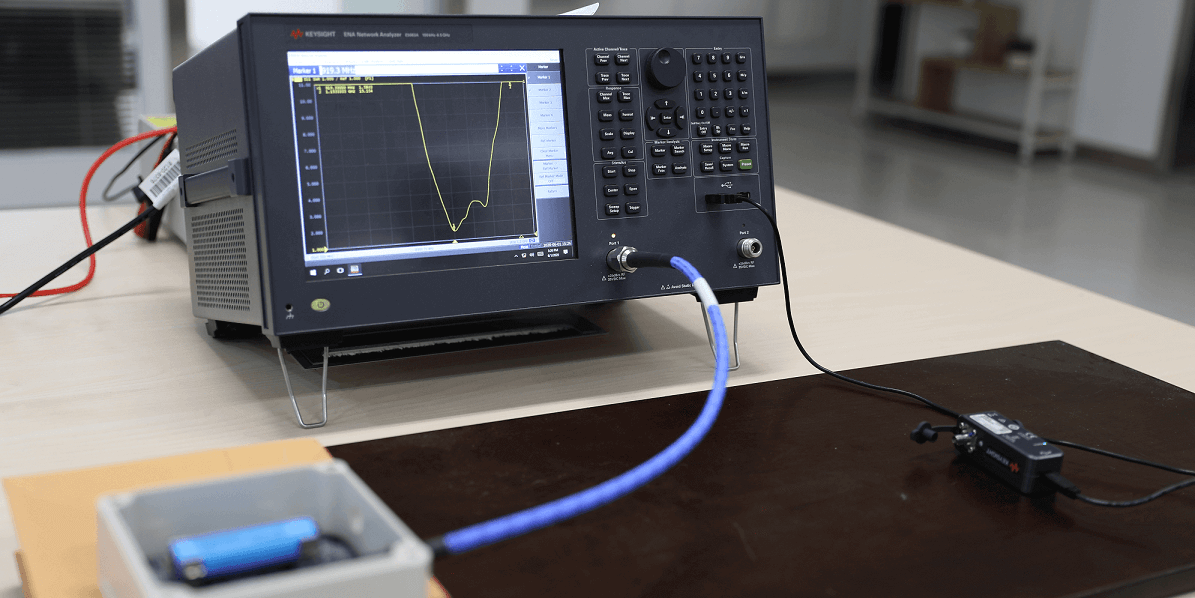 <antenna impedance matching>
<antenna impedance matching>
7. Guarantee optimal power consumption state through testing
Besides all the above factors, on the final test procedures, the highly sophisticated measuring instruments are worked to detect and measure the performance of components entirely, which is beyond the capabilities of the man-power. Milesight can ensure that every component in the LoRaWAN® sensor device is in the most optimal power consumption state when it is shipped out of the factory.
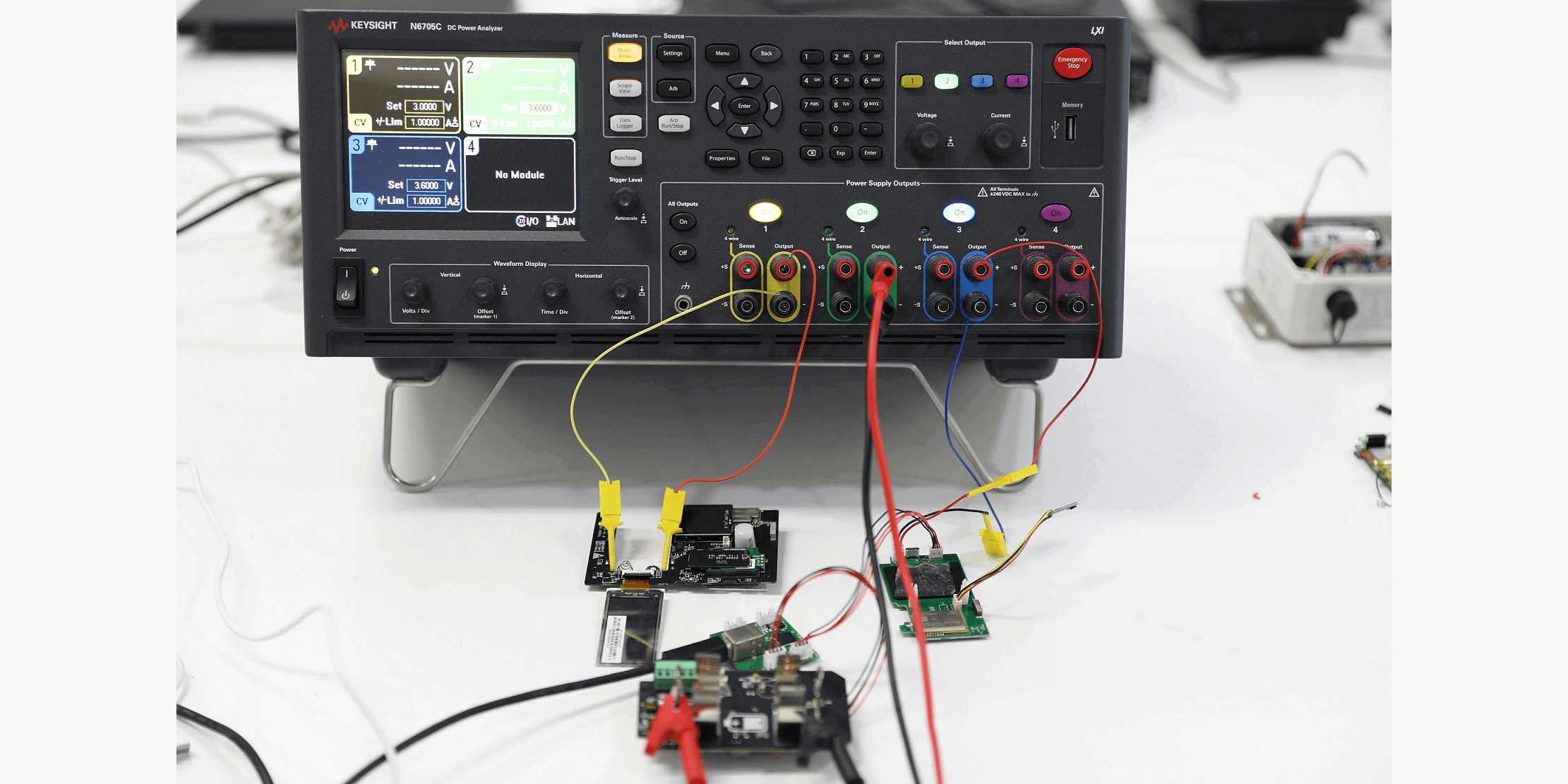 <measuring the power usage>
<measuring the power usage>
Power consumption is one of the most constraining requirements for the design and implementation of LoRaWAN® sensors. In this blog, we present seven certain ways to minimize energy consumption and optimize the battery life of Milesight LoRa sensors.
In the Internet of Things (IoT) world, if the real-time data transmission is not a priority, but the wide range and long-distance coverage are more important in an IoT solution, then the LoRaWAN® based sensors with super low power consumption can be your first choice.
For more information about how the technical team at Milesight can help you to achieve your business goals using LoRaWAN® devices, get in touch today

